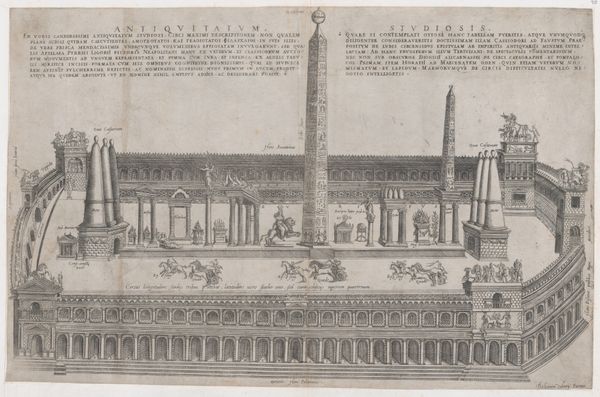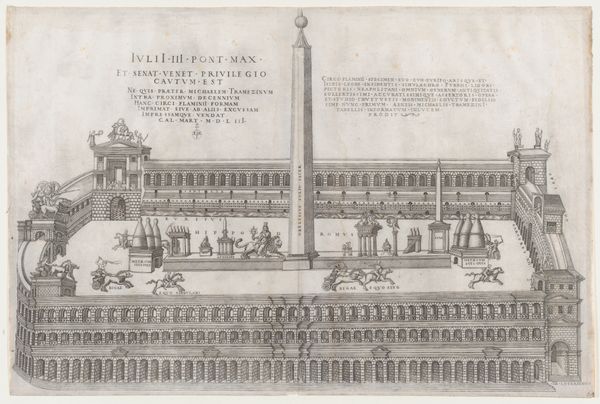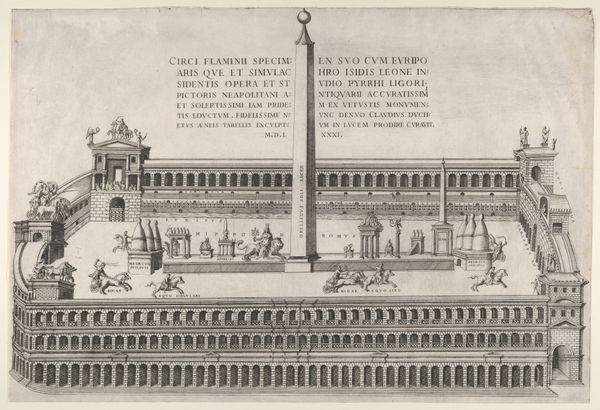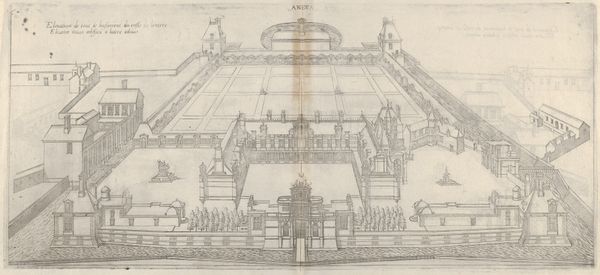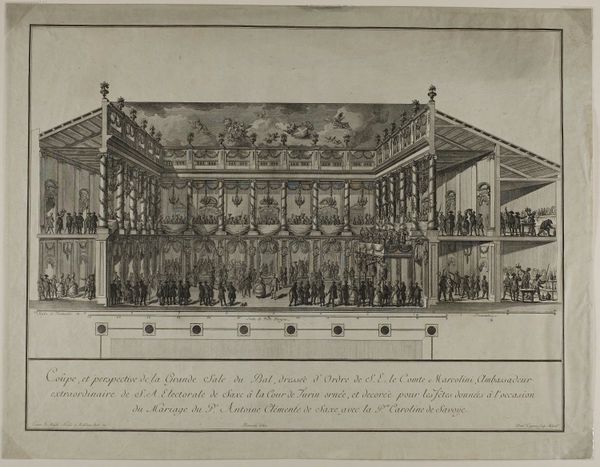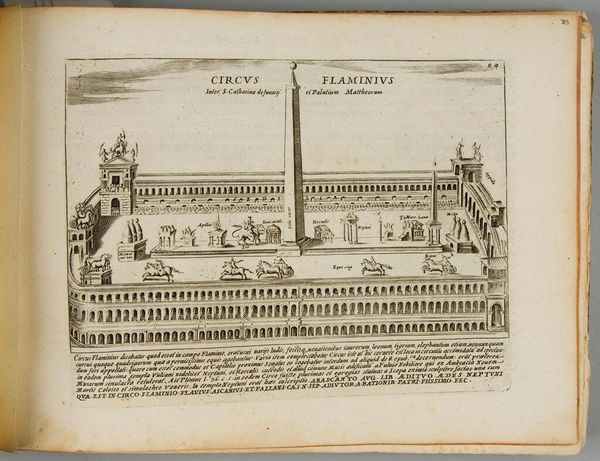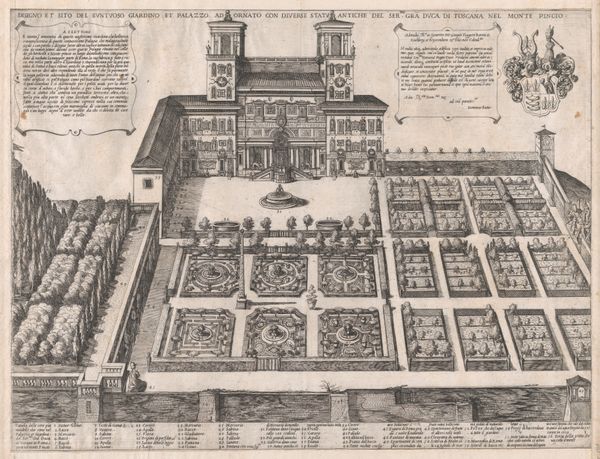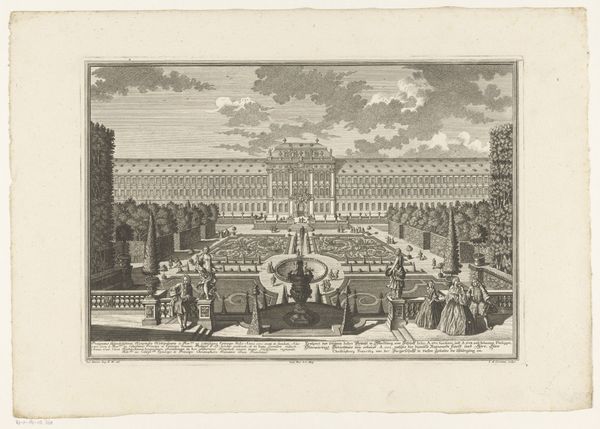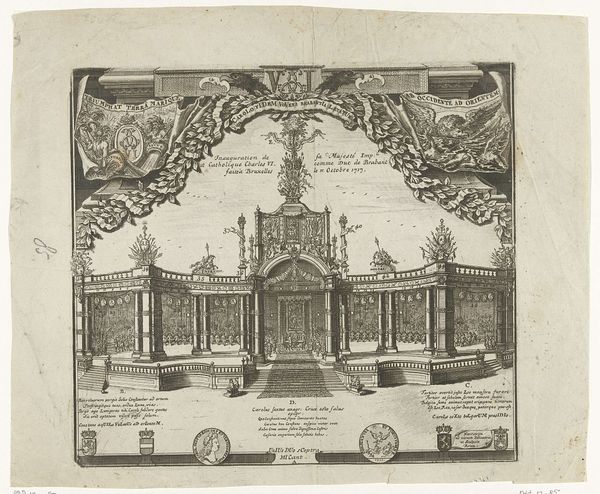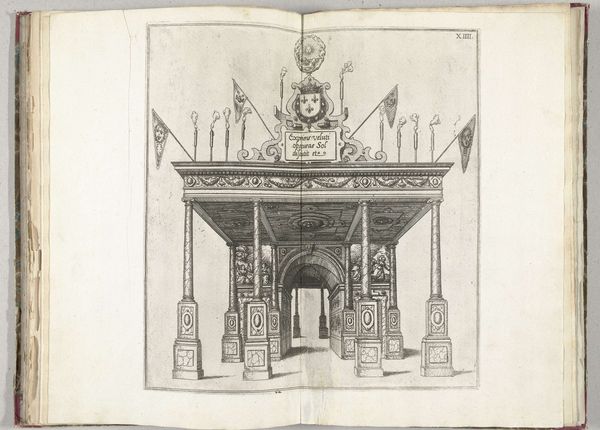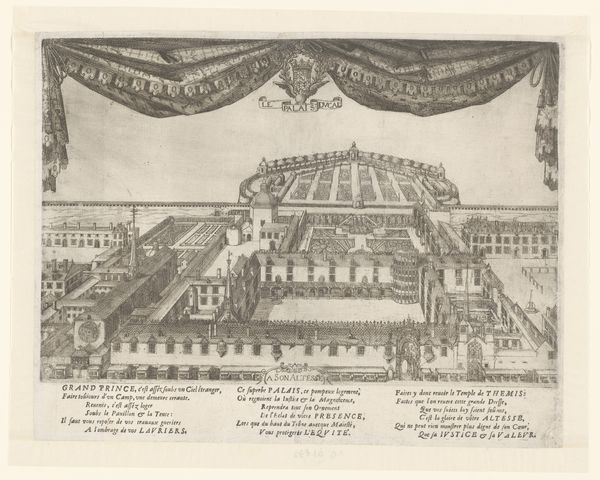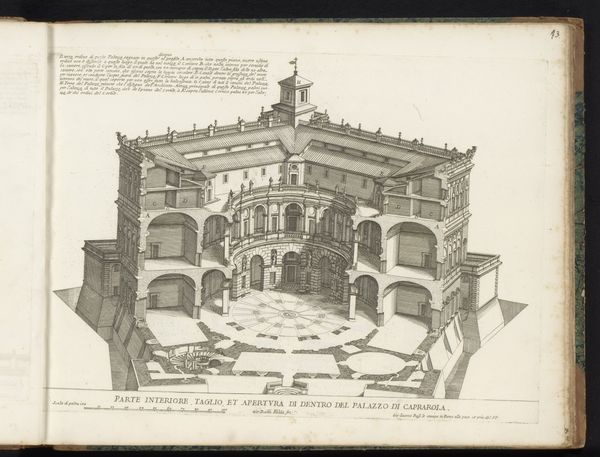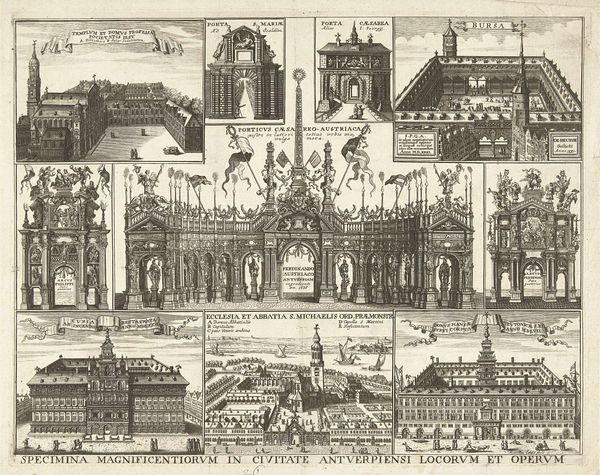
Speculum Romanae Magnificentiae: Circus Maximus 1581
0:00
0:00
drawing, print, engraving, architecture
#
drawing
# print
#
pen sketch
#
11_renaissance
#
cityscape
#
italian-renaissance
#
engraving
#
architecture
Dimensions: sheet: 14 3/4 x 21 9/16 in. (37.5 x 54.7 cm)
Copyright: Public Domain
Curator: Welcome. Before us, we have Giovanni Ambrogio Brambilla’s engraving, dating back to 1581: "Speculum Romanae Magnificentiae: Circus Maximus.” It is currently held in the collection of the Metropolitan Museum of Art. Editor: My goodness, it's all angles and industry, like an architect showing off a proposal! Not a person in sight, which gives the whole thing an air of impossible ambition... Curator: That absence, or rather, implied presence, is critical. These prints, part of a larger series, showcase Rome’s ancient monuments, often restored or imagined. Brambilla catered to a burgeoning tourist industry. Editor: So it’s less a snapshot of daily life and more of a stage set. And the level of detail… you can almost feel Brambilla meticulously etching each individual stone! It's this kind of intense dedication that makes me think about how the modern observer approaches ancient Rome. The original experience—the noise, the chaos—is entirely lost. We get a flattened, ordered ideal, presented in a pristine, utterly silent, format. Curator: The print’s formal style and architectural precision reflects Renaissance interest in classical antiquity. Prints like these served not only as records but as tools to communicate, interpret and sometimes to reimagine a very different kind of Rome for audiences that may never get to see the city itself. They fueled scholarly debates. Editor: Right. I am immediately drawn to the inscription—like captions—describing, essentially, what they believe to be the ideal Circus Maximus! Curator: That is consistent with the historical sources available. Brambilla likely referenced historical texts, archaeological remains, and scholarly reconstructions available at the time. In a way it also validates the Renaissance project of reconstructing Antiquity’s ideal forms in contrast to what they might have perceived to be the darker ages that intervened. Editor: There's something melancholic about that pursuit, actually, and perhaps about this print—in all its ambition to show what has been and no longer exists. Curator: Yes, seeing it presented like this allows for a multi-layered historical engagement—both with Rome as it stood and the cultural moment in which Brambilla’s vision was conceived. Editor: Precisely! What seems like mere archival rendering speaks of artistic ego, long dead civilizations, and scholarly desires from way back when. All neatly pressed on a single page.
Comments
No comments
Be the first to comment and join the conversation on the ultimate creative platform.
